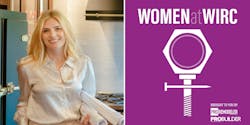How to Train for and Run Effective Design-Build Meetings
LEFF Design Build Director of Operations Morgan Thomas is tired of ineffective, boring meetings. At LEFF, Thomas has learned—and taught—how to maximize everyone's time through engaging, productive meetings. After all, design-build remodeling thrives on communication, so you better do it correctly.
"What we are offering our clients is this highly collaborative team that is working together for the success and health of the project—but the only way to really do that is through a lot of meetings," says Thomas.
On this episode, Thomas shares her background in construction while providing the best practices for effective meetings. This includes how to train team members on facilitating, creating pre-meeting checklists, and how to wrangle in client meetings.
"If the sole purpose of the meeting is to deliver information, it should be an email," she says. "There is no reason to have a meeting because your meetings are inherently collaborative."
Timestamps:
00:00 Meet Morgan Thomas: From Project Manager to Director of Operations
1:11 The Evolution of Leadership and Team Dynamics at LEFF Design Build
1:58 No More Boring Meetings: A Passion for Efficiency
3:23 Inside LEF's Meeting Culture: Training, Structure, and Execution
6:53 The Art of Facilitating Productive Meetings
12:15 Handling Meetings with External Parties: Strategies and Challenges
14:07 Continuous Improvement: Rating and Reflecting on Meeting Effectiveness
15:00 Open Invitation for Meeting Innovation and Feedback
Transcript:
Caroline Broderick: LEFF Design Build was founded in 1976 and transitioned to Design Build in the early 90s, making it one of the first in Sonoma County. Morgan Thomas joined on as a project manager after working in commercial construction. She's now been in the industry about 10 years, but LEF was her first foray into residential.
Thankfully, she happens to love it.
Morgan Thomas: And then just ended up falling in love with residential and I'm so inspired by the work that we do. So it, it just worked out happy kind of by product was that I ended up loving it way more than what I was doing before.
Broderick: After working as a project manager for a few years, Morgan worked her way up to managing the production department. Now today she's the director of operations working directly below the president and helping to lead the company.
Thomas: So it's like, I like to say it's like high level project management of the entire company where I'm helping with workflow management and tools and processes and systems for the whole team. So it's just an evolution of project management, just a little bit, a little bit different, but still super fun.
We've, we follow EOS. So we took kind of that approach and how we were going to structure our leadership team as well. And so we re we took those assessments and there's two seats. One is a visionary seat and one is an integrator seat.
And when we do those assessments, it's very clear. Candace is the vision and I am the integrator. I want to do all of the planning and the strategy and the implementation and she is big picture vision and she's so talented in that seat and that role and she's really good about You know, speaking on behalf of left and representing the brand in a really strong way and galvanizing the team and directing us kind of where we're going to be in 10 years.
And then I take it apart and break it down into all the pieces of how we're going to get there.
Broderick: And Morgan, I love this overview of you're the implementer. Candace is the visionary and that. Ties perfectly into our conversation today about no boring meetings. It's something when you and I chatted, you identified, you're pretty passionate about, and that was so interesting to me for so many reasons. People really need to make the most out of your face to face time and when you're having those meetings. Why are you so passionate about this idea of no more boring meetings?
Thomas: Well, it's a super integral part of being design build. What we are offering our clients is this highly collaborative team that is working together for the success and health of the project.
But the only way to really do that is through a lot of meetings. , I am. A passionate proponent of efficiencies. And so I can't stand when meetings are languishing it. We didn't move the ball forward. Any, any, in any capacity because we just got sidetracked onto a tangent and now we'd have to have another meeting and nobody knows.
What is the next step or where we're going? And so we really have made a conscientious effort to put a lot of structure around the way that we conduct our meetings both internally and externally with our clients to make sure that we're maximizing everybody's time in those meetings and making them as productive as possible.
Without having clear objectives and a clear structure, it's really easy to fall into bad habits.
Broderick: Yeah. Amen.
And something you said there, having it be both internal and external, that's really interesting because internally you can control semi, somewhat, somewhat how your team members are conducting themselves or facilitating meetings.
But when it gets external with clients, that's a little trickier. So let's start internal though. You know, nobody's ever really taught how to run a meeting except at left, right? You guys include that in your training. So walk me through this a little bit. What does that entail?
Thomas: Okay, so yes, we do a meeting facilitation component to training because most of the seats at left take a term facilitating meetings, depending on where they sit in relation to the project's life cycle. So, most people have an opportunity to facilitate a meeting at left, there's very few seats where you're not.
So everybody gets this training, even if they are an apprentice carpenter so that they understand how to participate in meetings when they when they are invited to them and what to expect when they attend a meeting at last. So, we believe that we do this training for everybody in the company. It's really important that we have that shared language and vocabulary and an understanding.
What a meeting really means and what we're trying to get out of it so that everybody can be active participants when they do attend meetings. So we do trainings. We have a, we have checklists for how to prepare for a meeting and how to debrief after a meeting that everybody gets. But we also start every single meeting.
It left starts the same way where we put structure around what we are doing at that meeting. And the structure has four components. We always talk about purpose. Why are we meeting today? We always Address the agenda, what topics are we going to be covering in order to support the purpose of that meeting?
We talked about the logistics for that meeting. How long are we meeting today? When are we stopping? Where are we meeting? Do we have all the tools? And then we talk about the desired outcomes. Where are we trying to get between. Right now when we start the meeting and when we end this meeting, what are the desired outcomes?
Listen to the full podcast above, or find Women at WIRC on any podcast platform

